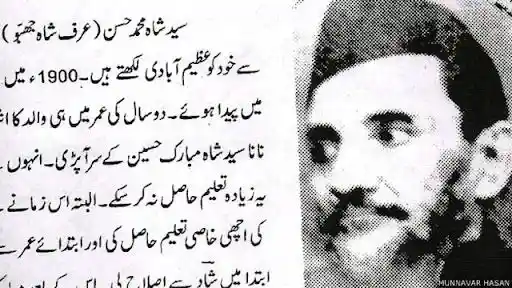Sarfaroshi ki Tamanna: A soul stirring ode to every patriot at heart
Vladimir Lenin said, "There are decades where nothing happens, and there are weeks where decades happen". The composition of the poem Sarfaroshi Ki Tamanna was one glorious event that gave life to the sleepiest of decades and motivation in the most troublesome weeks. A soul-stirring work that was written during the Indian freedom struggle, Sarfaroshi ki Tamanna continues to awaken patriotic feelings even a century later.

Bismil Azimabadi- the man who penned down the revolutionary spark. Image source: BBCBismil Azimabadi- the man who penned down the revolutionary spark. Image source: BBC
When India was still fighting for its freedom, there were days when the rage was high, the atmosphere was intense, and a ray of hope ran through the population. But there must have been countless occasions when the best people felt dejected and hopeless, albeit for a split second.
After all, nations aren't forged or liberated overnight.
However, even during the time of uncertainty when spirits waxed and waned like the moon, the one thing that kept the fire ignited were the words spoken and written in that era.
In 1921, the freedom fighter and Urdu poet Bismil Azimabadi wrote a poem- Sarfaroshi Ki Tamanna, that stirred the soul of an entire nation and continues to do so even 100 years later.
Back then, many young men were willing to selflessly lay down their lives for the country's freedom. Further, the Jallianwala Bagh Massacre of 1919 had jolted the entire nation. Such an inhumane incident reflected the lengths of atrocities the colonisers were willing to inflict on the people.
At the time, many revolutionaries took action against the torment and attacked British officials to instil the same fear.
The poem Sarfaroshi Ki Tamanna begins with an ardent message conveying that we're ready for a revolution, and all that's left is to see the strength wielded by the executioner.
Consisting of eleven couplets, each stanza sparks bravery and a patriotic feeling. He even uses a very demanding and melancholic tone and wants to know why we're quiet and just seeing what's ours being taken away from us. From honouring the courage of the martyrs to embracing death as an old friend as one risks losing their lives in this struggle for freedom, Sarfaroshi Ki Tamanna reminds us of human resilience. And by doing so, he even glorifies death.
As the poet repeats sarfaroshi ki Tamanna ab humaare dil mein hai, he also creates reverberating effect. While he laments the inaction when times get tough, he urges everyone to fight courageously without fearing death. Each line resounds with the need for revolution and a desire for the inevitable struggle that would lead to victory eventually.
These immortal lines soon became a way cry for India's freedom struggle against the British.
The efforts of peasants, labourers and all those at the grassroots were eventually recognised. Even Bhagat Singh, his comrades, and the HRA (Hindustan Republican Association) acknowledged them as the true revolutionaries and driving forces of this struggle.
Due to its nature and patriotic style, it's no surprise that multiple directors and even politicians continue to quote from this masterpiece. In recent times, the narration of this poem, whole or in couplets, was seen in many movies such as Rang de Basanti, Gulaal, etc.
In recent times, Former Prime Minister Manmohan Singh also used the first line of the poem as the opening for his budget speech in 1992.
Seldom do we come across works that ignite our souls no matter where we might be or the era where we're living. Sarfaroshi Ki Tamanna is one of them- a revolutionary, patriotic, and sentimental ode to the changemakers, the revolutionaries, and all those who take risks for the betterment of this country.


